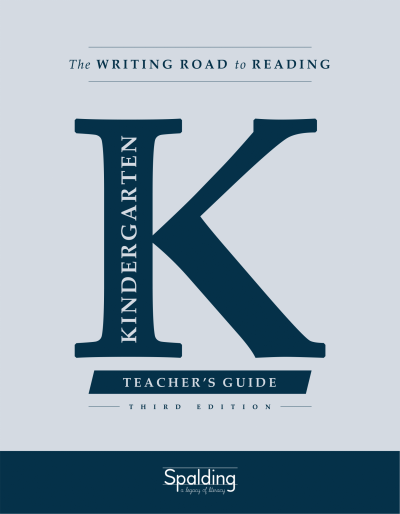Evaluation for 5.C.1c
Materials include teacher guidance to provide explicit (direct) and systematic instruction for letter formation for the 26 letters of the alphabet (upper and lowercase). (PR 2.A & 2.A.3) (T)
The materials include teacher guidance to provide explicit and systematic instruction in forming uppercase letters. In The Writing Road to Reading instructional text, the section titled "Lessons, Procedures, and Why This Method Works" provides instructional strategies for teachers. For example, it states, "All capital letters are tall. Capital letters almost fill the space between the baseline and the line above. The rules for round lowercase letters also apply to the following capital letters . . ." followed by a list. The precise dialogue for phonogram card 2 instructs: "Start at the 2 and go up and around the clock, touching the baseline and stopping at 4." For uppercase letters, the materials state: "The rules for round lowercase letters also apply to the following capital letters: C, G, O, Q, S. They each start at 2 on the clock and go up. Since they are tall letters, the round parts are somewhat elongated vertically." Capital letters systematically begin with the round capital letters (C, G, O, Q, S), followed by capital letters with vertical lines starting at the top (A, E, F, H, I, J, T), and finally capital letters formed just like their lowercase letters (V, W, X, and Z). The materials provide explicit instruction for forming lowercase letters, as outlined in The Writing Road to Reading. In the section titled "Lessons, Procedures, and Why This Method Works," scripts are provided to the teacher to instruct the students. An example states, "I will show you how each letter is written . . . This is a short letter. Short letters fill the space between the mid-point and the baseline. Form the letter without lifting the pencil." Students are introduced to the phonograms based on their formation. For example, beginning with "Academic Day 2," students read the lowercase phonogram o and finger write it. On successive days, the following seven phonograms are added: a, c, d, f, g, s, and q, because these are formed using knowledge of the 2 o'clock position. The instructional sequence has students say the sound and then write its shape. For introducing lowercase phonograms 9–26 (the "line" letters), students learn four letters per week.



